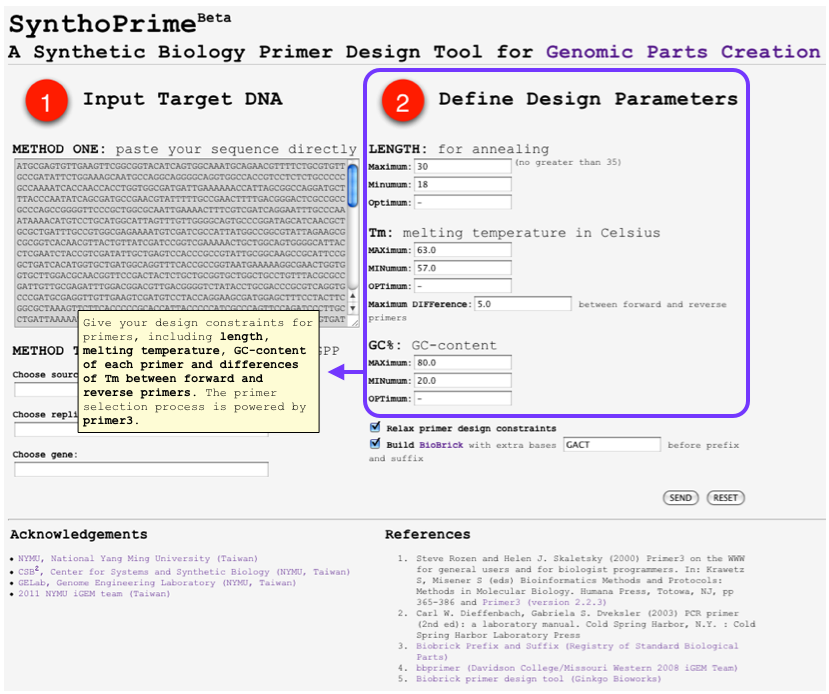Team:NYMU-Taipei/synthoprime
From 2011.igem.org
| Line 4: | Line 4: | ||
| - | HOWTO: User Inputs | + | SynthoPrime algorithm is developed to provide the access of all the available genomic parts (biological parts from sequenced genomes) for the specific needs of primer design in synthetic biology communities. It provides an automated ONE-STEP primer design service of BioBricks for iGEM. Near 1,400 bacteria and their 2,551 replicons (chromosomes and plasmids) are extracted from NCBI genome database by BioPerl package as genomic templates in our service. The jQuery Javascript library is used for interactive web user interface design to help synthetic biologists to access genomic parts from the sequenced genome templates for primer design. Our online service aims to provide a one-step primer design tool and sequenced genomes as templates to convert sequenced genomes into biological parts with quantitative measures for synthetic biology community. |
| + | |||
| + | ---- | ||
| + | |||
| + | |||
| + | HOWTO: <font color=red>User Inputs</font> | ||
{| | {| | ||
| Line 19: | Line 24: | ||
|} | |} | ||
| - | HOWTO: Output Reading | + | HOWTO: <font color=red>Output Reading</font> |
{| | {| | ||
| Line 34: | Line 39: | ||
{| | {| | ||
| valign=top| | | valign=top| | ||
| - | [[File:SynthoPrime manual p7.png|thumb|630px| | + | [[File:SynthoPrime manual p7.png|thumb|630px| We would be more than happy to hear your comments and suggestions.]] |
|- | |- | ||
|} | |} | ||
Revision as of 13:27, 5 October 2011

SynthoPrime algorithm is developed to provide the access of all the available genomic parts (biological parts from sequenced genomes) for the specific needs of primer design in synthetic biology communities. It provides an automated ONE-STEP primer design service of BioBricks for iGEM. Near 1,400 bacteria and their 2,551 replicons (chromosomes and plasmids) are extracted from NCBI genome database by BioPerl package as genomic templates in our service. The jQuery Javascript library is used for interactive web user interface design to help synthetic biologists to access genomic parts from the sequenced genome templates for primer design. Our online service aims to provide a one-step primer design tool and sequenced genomes as templates to convert sequenced genomes into biological parts with quantitative measures for synthetic biology community.
HOWTO: User Inputs
HOWTO: Output Reading
References and Feedback
 "
"












